Poultry, Fisheries & Wildlife Sciences
Open Access
ISSN: 2375-446X
+44-77-2385-9429
ISSN: 2375-446X
+44-77-2385-9429
Research Article - (2021)Volume 9, Issue 8
Length-weight relationship and condition factor of Penaeus indicus (H. Milne Edwards) were investigated for different culture phases, developmental stages, brood stock phases and sexes in the present study. Regression lines differed among the culture phases, developmental stages as well as between sexes. The length-weight relationship of the sampled shrimps had regression coefficient ranging between (b=1.13) in nursery phases to 2.947 in brood stock phases. The b coefficients were not equal to 3 in each stages, hence growth were allometric (b values were lesser/ greater than 3). The most significant variation in the slope was observed among nursery and brood stock phases. Sex wise comparison is not exhibiting highly significant variation between male and female. Therefore, separate inter conversional equations were derived for different culture phases, developmental stages and sexes to simplify management during culture. Additionally, condition factor was also found to be varying significantly between different nursery phases and grow out phases. But between sexes it’s not significantly differentiated.
Length; Weight; Condition factor; Penaeus indicus; Allometry
Shrimp farming has become a multi-dollar industry, and in 2018, frozen shrimp earned almost $US 5 billion, which is almost 70% of the total sea food earning [1]. The huge contribution in the farmed shrimp production is mainly from exotic species Penaeus vannamei which has been selectively bred for growth enhancement. Though the P. vannamei revived the growth of Indian shrimp farming sector, the industry has been in stress during recent year due to the invasion of new diseases such as WSSV, EHP, EMS etc. and other deformities such as poor larval survival, growth etc. In this context, the development of native shrimp, Penaeus indicus is found to be a viable option for the long term sustainability of the aquaculture industry [2-4]. Diversification of species is required for stable and sustainable aqua cultural industry development. Scientific shrimp farming of P. indicus was initiated in early 1980, when aquaculture of tiger shrimp, P. monodon was popularized, this species has lost its importance. In this the context mentioned to know the condition of P. indicus in various developmental stages which are very crucial for culture of the species. The length-weight relationship has vital importance in fisheries science. Length-weight relationships are very important in fisheries management for comparison of growth studies [5-8]. It helps in establishing mathematical relationship between the two variables, enables conversion of one variable to describe growth in the wild to determine possible differences among different stocks of the same species, delineate the stocks and comparative growth studies [9-11]. Although shrimp body weight is commonly recorded for culture management purposes (e.g. estimations of growth rate, feed conversion ratio, harvest weight, and productivity), the application of morphometric relationships could be a simple alternative to estimate body weight from length measurements that are less variable and more easily measured in the field [12]. Therefore, the use of morphometric measurements and mathematical models in aquaculture is highly encouraged because that is the most precise and complete way of analysing growth data [13]. The ratio of the length-weight relationship of shrimp is known to be useful index of the condition of shrimp. Variability in the length-weight relationship is as an indicator of conditions that can reflect fluctuation in the uptake and allocation of energy in marine fishes and crustaceans. These morphometric variations can be affected by many factors such as food, stress (overcrowding and diseases), or reproductive cycle. Length-weight relationship of penaeid shrimps differ among sexes, species, seasons and sites in both wild and cultured populations [14]. The study of length-weight relationship of the penaeids is not only important in understanding the biology of the species and its population dynamics but it is also important for the proper management of their resources [15,16]. Morphometric traits used to describe penaeid growth usually include carapace length, total length, and body wet weight [17]. Although shrimp body weight is commonly recorded for culture management purposes (e.g. estimations of growth rate, feed conversion ratio, harvest weight, and productivity), the application of morphometric relationships could be a simple alternative to estimate body weight from length measurements that are less variable and more easily measured in the field [12,18]. The most common body measurements in penaeid shrimps are carapace length, body length and total length. Sexual dimorphism, morphological differences between the sexes mediated by the action of sex hormones is a dominant condition among crustacean species, group in which females often grow larger and reach larger sizes than males [19].
The condition factor (K) is an index reflecting interactions between biotic and abiotic factors in the physiological condition of the fishes. It shows the well-being of the population during various life cycle stages and assessments of fish condition based on weight at a given length are thought to be reliable indicators of the energetic condition or energy reserves in fish [20]. It shows the well-being of the population during various life cycle stages and assessments of fish condition based on weight at a given length are thought to be reliable indicators of the energetic condition or energy reserves in fish [20]. Although condition factor indicates the general body condition but not the qualitative characteristics (protein, lipid, carbohydrates, etc.) of the body condition could be a useful complement to expensive in vitro proximate composition analysis [21]. Relationships that allow inter conversions among the various length and weight parameters are needed e.g., to compare growth parameters especially for commercially important species like the Indian white shrimp, Penaeus indicus [17]. The present study investigated the different stages length-weight relationship of Penaeus indicus to know the condition of animal.
The length and weight data of Penaeus indicus individuals were obtained during stocking or termination of various studies regarding nursery rearing, grow out and brood stock development conducted at the Central Institute of Brackish water Aquaculture (CIBA), crustacean culture division, and shrimp hatchery during the period from 2014 to 2016. Data were collected from three different culture phases: nursery (2 months), grow out (3-5 months), and brood stock from wild. Total length (TL) was measured to the nearest 0.1 mm using a 30-cm ruler for nursery, grow out and brood stock animals, as the distance from the tip of the rostrum to the tip of the telson. Analytical balances with precision of 0.01 g were used to record body weight (BW). Approximate size ranges were (a) nursery: 30-50 mm TL, (b) grow out: 130-150 mm TL and (c) Brood stock: 130-190 mm TL.
Determination of meristic measures
Total length (TL) was measured to the nearest 0.1 mm using a 30 cm ruler for nursery, grow out and brood stock animals, as the distance from the tip of the rostrum to the tip of the telson. Analytical balances with precision of 0.01 g were used to record body weight (BW). Approximate size ranges were a) Nursery: 30-50 mm TL, b) Grow out: 130-1150 mm TL and c) Brood stock: 130- 190 mm TL.
Length-weight relationship
The relationship between the total length (TL) and weight (W) of shrimps was expressed by equation:
W=a Lb
Where,
W=Weight of shrimps in (g) L=Total Length (TL) of shrimps in
(cm) a=Constant (intercept), b=The Length exponent (slope)
The “a” and “b” values were obtained from a linear regression of the length and weight of shrimps. The values of “a” and “b” were given a logarithm transformation according to the following formula: The Scatter diagrams were plotted to illustrate the relationship between the length and the weights of the P. indicus using Minitab 14. The log of lengths and weights were obtained and plotted in order to establish the relationship between them.
Condition factor
The condition factor (k) of the shrimps was estimated from the relationship:
K=100*W/L3
Where K=Condition factor,
W=Weight of shrimps (g),
L=Total Length of shrimps (cm)
The mean total lengths and weights of each stage were used for data analysis.
Length weight relationship
The length of P. indicus of nursery phases ranged from 2.15 ± 0.15 cm to 3.85 ± 0.85 cm and weight varied from 0.23.12 ± 0.012 to 0.54 ± 0.032. The mean length of 90 days female P. indicus was found to be 14.281 ± 0.827 cm and weight 22.18 ± 2.72 g and 13.306 ± 0.54 cm in males and the weight 16.74 ± 1.64 was recorded. During brood stock phase the mean weight of male was 44.21 ± 1.20 and male weight 35.37 ± 6.96. The values for elevation (a) and slope (b) together with their corresponding regression coefficient (r2) for the length–weight relationships in P. indicus of different developmental stages (nursery phases), culture stages (grow out phases), brood stock stages with sex differentiation are presented in Table 1. The relationships vary with different stages such that different equations have to be used for purposes of inter conversions.
| Particulars | N | A | Log a | b | r2 | Growth pattern |
|---|---|---|---|---|---|---|
| Nursery phases | 400 | 0.123 | -0.91009 | 1.13 | 0.190 | Allometry |
| Grow out phases (male) | 200 | 0.00002 | -4.69897 | 2.76 | 0.750 | Isometry |
| Grow out phases (female) | 200 | 0.039 | -4 | 2.36 | 0.769 | Isometry |
| Brood stock (male) | 103 | 0.00002 | -4.69897 | 2.89 | 0.750 | Isometry |
| Brood stock phases (female) | 271 | 0.00001 | -5 | 2.947 | 0.724 | Isometry |
Table 1: Length weight relationship and regression coefficient of different stages of P. indicus.
Nursery phases
Nursery juveniles showed significantly lower values of b (Table 1), indicating lower weight gain relative to increase in length compared to grow out and brood stock animals. The growth in nursery showed negative allometry where as it is isometry in grow out as well as brood stock animals. Although the slope in grow out is found higher than brood stock, no significant difference was observed between grow out and brood stock animals. Scatter diagrams of length and weight for different culture phases exhibited curvilinear relationship are shown in Figures 1-5.
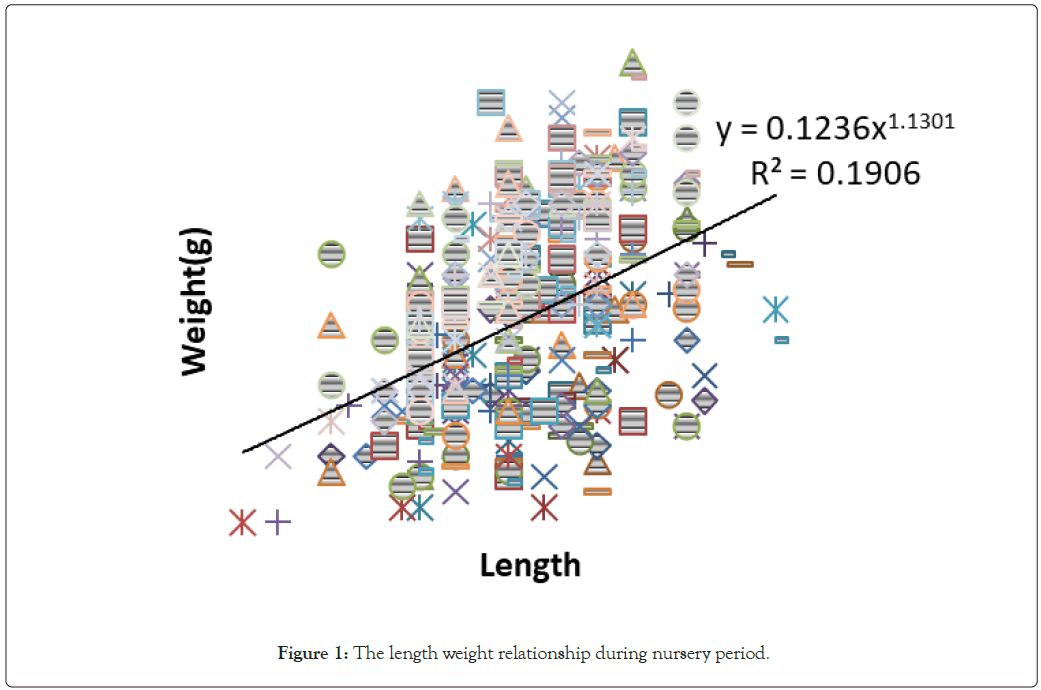
Figure 1: The length weight relationship during nursery period.
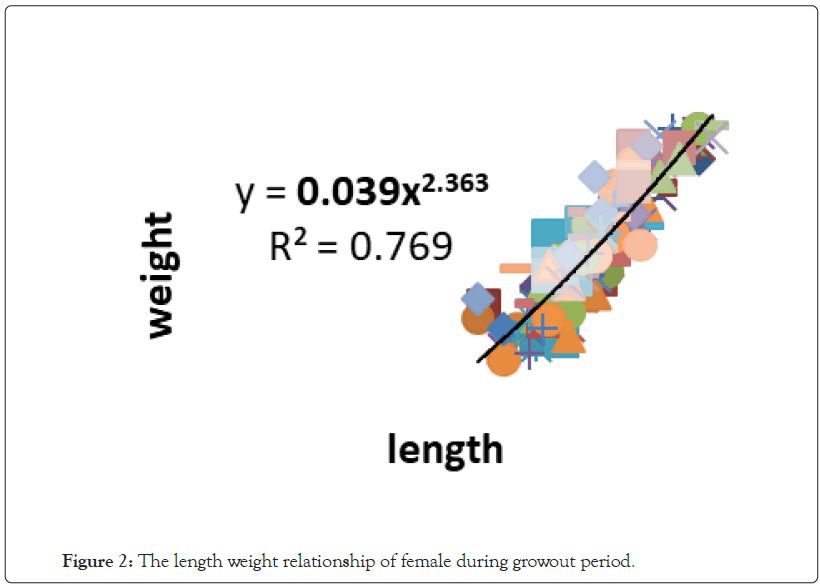
Figure 2: The length weight relationship of female during growout period.
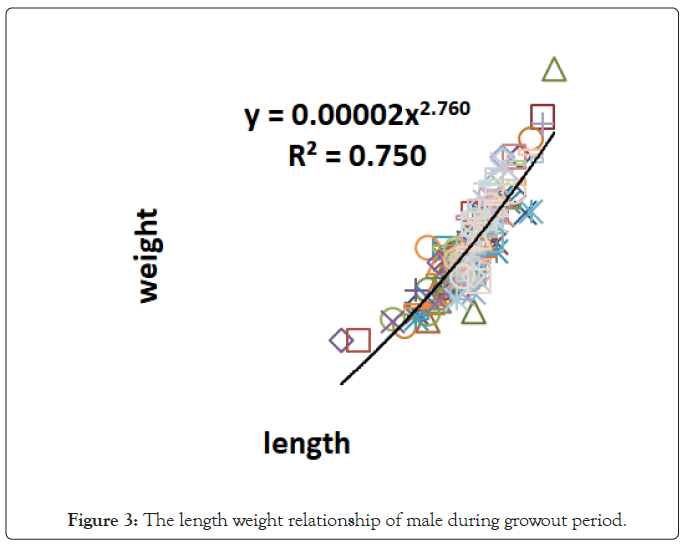
Figure 3: The length weight relationship of male during growout period.
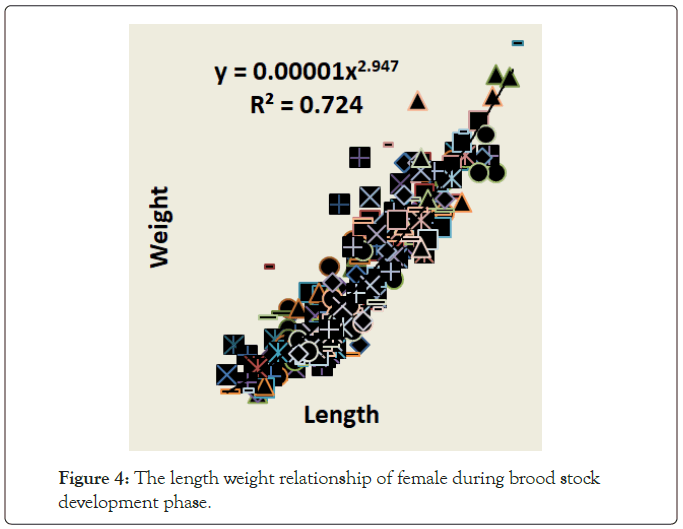
Figure 4: The length weight relationship of female during brood stock development phase.
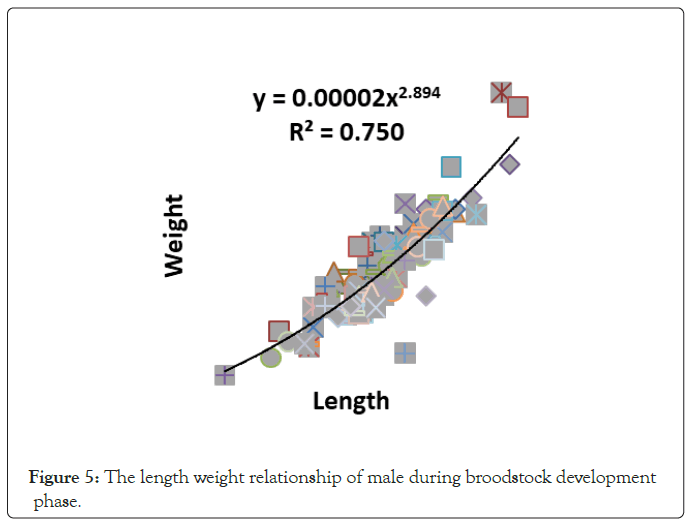
Figure 5: The length weight relationship of male during broodstock development phase.
Grow out phases
During grow out phases the male showing the b value less than female. The’ b’ value in male is 0.00002 where as it is 0.039 in female which is significantly different. The regression coefficient (r2) value in this phase is different from nursery and brood stock phase. But within male and female sex it is not significantly different.
Brood stock phases
In this phase the a and b value with regression (r2) was calculated for both sex. The male brood stock showing the b value less than female but the r2 value male showing more. Both the male and female showing isometry growth as the length is proportional to weight.
Condition factor
The condition factor obtained in the present study ranges from 0.70±0.0 in grow out male animals to 0.96±0.16 in Brood stock female animal (Table 2). No significant variation was observed in K of different culture stages with brood stock animal showing the highest followed by nursery animals and grow out animals.
| Particulars | Condition factor (K) |
|---|---|
| Nursery phases | 0.77 ± 0.24 |
| Grow out phase (male) | 0.70 ± 0.04 |
| Grow out phases (female) | 0.73 ± 0.05 |
| Brood stock (male) | 0.91 ± 0.12 |
| Brood stock phases (female) | 0.96 ± 0.16 |
Table 2: Showing the condition factors with SD of different stage of P. indicus.
Length-weight relationship
Generally shellfishes and crustaceans maintain dimensional equality and the length-weight slope value less than 3 which indicate that the animal becomes slender as it increases in length whereas the slope having value greater than 3 represents stoutness indicating allometric growth as shown by Kurup et al., in Macrobrachium rosenbergii, and Lalrinsanga et al., [21,22]. The parameters of length- weight relationships estimated in the present study were within the ranges and also demonstrated by several workers [14,21]. The present study showed that the exponent “b” values for all the phases of animals ranged from 1.13 in Nursery phases to 2.94. in brood stock phases as in Table 1. The b values were not equal to 3. Hence growth in the different stage of P. indicus species was allometric (i.e. b values were less/greater than 3) showing that the rate of increase in body length is not proportional to the rate of increase in body weight. The brood stock stage of Female showing the more b value that is isometric and the nursery phases showing the less’ b’ value that is negative allometry. Then rest all the stages showing the Isometric relationship between length and weight. J.H. Primavera showed that the growth rate of animals varied widely which depend upon developmental stages [12]. Weight of most of the crustaceans is close to the cube of the length [23]. Pattern of weight increment varied among different groups in the present study which are in agreement with those obtained for P. martia collected from the Mediterranean Sea [24]. In contrast, the females did not show any significant differences although showed higher slope. Bigger female sizes might be due to greater weight, increase per molt cycle leading to faster growth rate. Different workers such as C.S. Cheng and L Chen in his paper growth characteristics and relationships among body length, body weight and tail weight of Penaeus monodon from a culture environment in Taiwan showed that the separation of morphometric relationship for sexes may not be important for penaeids at certain life stages [12,14,18]. Dall, et al., and Chu et al., showed that the same results [17,25]. Further Primavera et al., had reported that morphometric dimorphism due to sex was observed only after the brood stock stage in captivity when females showed greater body weight per unit length in P. monodon [12]. The present study showed the same results that during later grow out period the Penaeus indicus female showing the better growth than male.
Condition factor
The condition factor (K) played an important role in management of culture system as it provides certain information of specific conditions in which the organisms are growing described by M. Araneda [26]. The condition factor obtained in the present study ranges from 0.70 ± 0.04 in nursery animals to 0.96 ± 0.16 in brood stock female (Table 2). No significant variation was observed in K of different culture stages with brood stock animal showing the highest followed by grow out animals and nursery animals. The condition factor (K) which indicates the state of overall well-being of shrimps in this study is given in Table 2. The K values shows a fairly consistent but low value in grow out phase male and highest in brood stock phase female. Overall, the K value of brood stock (male and Female) showing significantly higher than other two stages that is nursery and grow out phases. But between the nursery and grow out phases the K value is not significantly differentiated. Information on condition factor (K) can be vital to culture system management because they provide the producer with information of the specific condition under which organisms are developing [26]. The present results revealed that condition factor of shrimp may also be considered as an indicator of management efforts in a culture system [27].
The present study provided the basic information on the length– weight relationship and condition factors of P. indicus in different life stages, which is important for shrimp culture, management and development.
The authors are grateful for the financial support provided by the National Fisheries Development Board (NFDB), Hyderbad, India and coordination for the improvement of work by ICAR-CIBA and for giving the facilities for conducting the experiment. Special thanks go to Director, CIBA.
Citation: Das RR, Panigrahi A, Saravanan A, Ambikanandham K, Arumugam S (2021) Length Weight Relationship and Condition Factor (K) of Penaeus indicus (H. milne Edwards) Based on Developmental Stages, Grow Out Stages, Brood Stock Stages and Sex. Poult Fish Wildl Sci. 9:219.
Received: 15-Jun-2021 Accepted: 29-Jun-2021 Published: 06-Jul-2021 , DOI: 10.35248/2375-446X.21.9.219
Copyright: © 2021 Das RR, et al. This is an open-access article distributed under the terms of the Creative Commons Attribution License, which permits unrestricted use, distribution, and reproduction in any medium, provided the original author and source are credited.